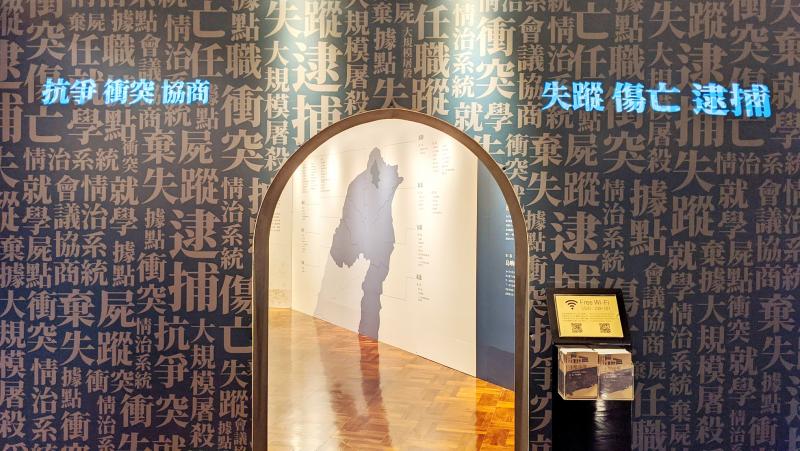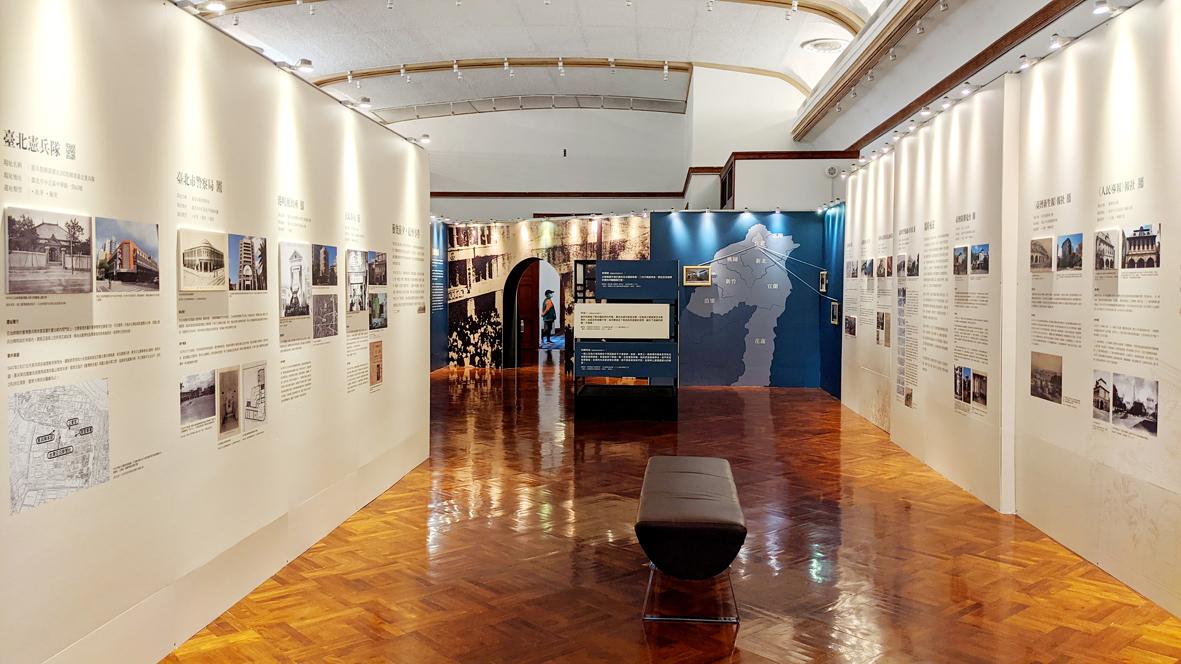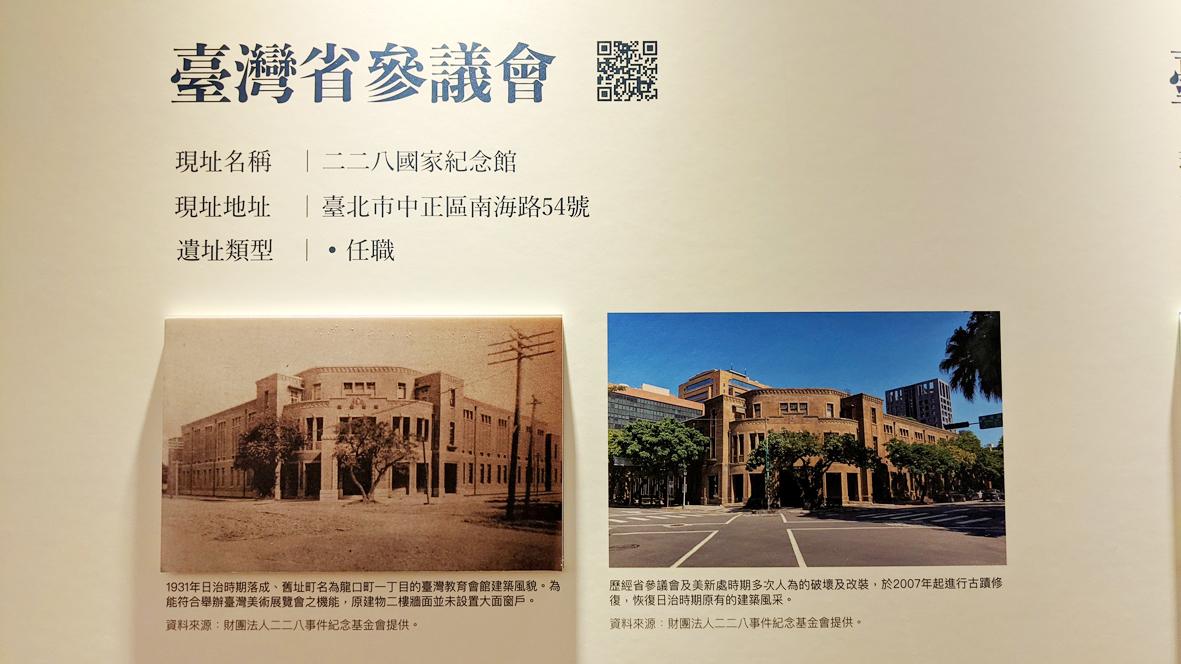“Hey, what is 228 anyway?”
My ears perked up when I overheard two young people sitting next to me discussing the upcoming holiday. I was eating a late dinner after spending all afternoon at the library researching and writing about some of the more obscure victims of the 228 Incident, the infamous anti-Chinese Nationalist Party uprising in 1947 that was brutally suppressed.
“I have no idea,” the other replied. They proceeded to look it up online and appeared astonished at the new information, especially over the number of alleged victims. Virtually censored and seldom discussed until the late 1980s, it seems that many younger locals still see Feb. 28 as just another day off, not a day of remembrance to the thousands who lost their lives.

Photo: Han Cheung, Taipei Times
I only had a cursory understanding of the incident before I started writing the history column Taiwan in Time five years ago, and throughout the years I’ve stumbled my way into some of the seldom-visited, cobweb-filled corners of the tragedy. But there’s still so much to explore, and I gained an even deeper understanding yesterday at the National 228 Museum’s new exhibition Scars on the Land (土地傷痕), which is the first of a three-part series on historic sites related to the 228 Incident in northern Taiwan, starting in Taipei and Keelung.
The show opened this past Sunday and runs until May 16, and generally covers events leading up to the uprising and the immediate aftermath. The second part, which opens May 20, will cover New Taipei City, Taoyuan, Hsinchu and Miaoli and deal with the attempts to negotiate with the Chinese Nationalist Party (KMT) government before troops arrived from China for the final bloodbath, which is detailed in the last chapter, set for Aug. 19.
The exhibition is organized chronologically. The first few sites set the scene and may not directly relate to the incident or the victims. The museum building, for example, is listed as the former home of the Taiwan Provincial Assembly, where its members in May 1946 slammed the Chinese Nationalist Party’s (KMT) rule of Taiwan after it took over in October 1945. These problems only worsened over the following two years until public frustration boiled over when police struck an old lady selling contraband cigarettes and accidentally shot a bystander during the commotion.

Photo: Han Cheung, Taipei Times
Since the displays also provide a synopsis of the incident, those who don’t know much can start here without much difficulty, but make sure to check out the museum’s permanent exhibitions on the same floor.
The entire exhibition is in Chinese, but English and Japanese translations of most of the texts can be accessed by scanning a QR code at the entrance. The system is not exactly intuitive, unfortunately, as all translated texts are contained in one long Web page (www.228.org.tw/en_exhibition-view.php?ID=9) without an easy way to match the text to the corresponding display, though the photos onsite and photos online are a good way to match up the information. It would be a lot more convenient if each display were labeled with a number, but it’s not that complicated once you get used to it.
The only parts that aren’t translated are the quotes by various victims and figures involved, as well as a list of newspapers that were shut down in the aftermath and staff members who were arrested or killed.

Photo: Han Cheung, Taipei Times
There’s no clear indication which direction to begin if you can’t read Chinese; start from the right hand side as you walk into the exhibition proper, and make your way around the room counter-clockwise.
A total of 20 sites, 18 in Taipei and two in Keelung, tell the rest of the story with interspersed commentary and historic images and documents.
The most rewarding part about the exhibition is that every site has a then-and-now photo comparison as well as a link to a Google map showing its location. All the sites in Taipei are located near each other in the western part of the city, which would make for an interesting walking tour. There’s also a map of where the various protesting crowds marched on Feb. 28, and history buffs can follow the footsteps of the fed-up populace.
Finally, there’s a video in the back of the exhibition space featuring survivors and experts talking in Mandarin, Hoklo (also known as Taiwanese) and English about their experiences. It lasts for about five minutes and rotates between versions, respectively, with Chinese, English, Japanese and Korean subtitles. The sound quality isn’t that great, so even if you do understand the spoken languages, you might still need the subtitles.
Despite the minor inconveniences, it’s an exhibition well worth seeing, and hopefully the museum will consider the aforementioned issues for part two.

Taiwan Power Co (Taipower, 台電) and the New Taipei City Government in May last year agreed to allow the activation of a spent fuel storage facility for the Jinshan Nuclear Power Plant in Shihmen District (石門). The deal ended eleven years of legal wrangling. According to the Taipower announcement, the city government engaged in repeated delays, failing to approve water and soil conservation plans. Taipower said at the time that plans for another dry storage facility for the Guosheng Nuclear Power Plant in New Taipei City’s Wanli District (萬里) remained stuck in legal limbo. Later that year an agreement was reached

What does the Taiwan People’s Party (TPP) in the Huang Kuo-chang (黃國昌) era stand for? What sets it apart from their allies, the Chinese Nationalist Party (KMT)? With some shifts in tone and emphasis, the KMT’s stances have not changed significantly since the late 2000s and the era of former president Ma Ying-jeou (馬英九). The Democratic Progressive Party’s (DPP) current platform formed in the mid-2010s under the guidance of Tsai Ing-wen (蔡英文), and current President William Lai (賴清德) campaigned on continuity. Though their ideological stances may be a bit stale, they have the advantage of being broadly understood by the voters.

In a high-rise office building in Taipei’s government district, the primary agency for maintaining links to Thailand’s 108 Yunnan villages — which are home to a population of around 200,000 descendants of the Chinese Nationalist Party (KMT) armies stranded in Thailand following the Chinese Civil War — is the Overseas Community Affairs Council (OCAC). Established in China in 1926, the OCAC was born of a mandate to support Chinese education, culture and economic development in far flung Chinese diaspora communities, which, especially in southeast Asia, had underwritten the military insurgencies against the Qing Dynasty that led to the founding of

Artifacts found at archeological sites in France and Spain along the Bay of Biscay shoreline show that humans have been crafting tools from whale bones since more than 20,000 years ago, illustrating anew the resourcefulness of prehistoric people. The tools, primarily hunting implements such as projectile points, were fashioned from the bones of at least five species of large whales, the researchers said. Bones from sperm whales were the most abundant, followed by fin whales, gray whales, right or bowhead whales — two species indistinguishable with the analytical method used in the study — and blue whales. With seafaring capabilities by humans